Aerial filming may be from helicopters, fixed wing aeroplanes, hot air balloons, microlights or gliders, both in the UK and internationally.
The key to getting great aerial footage is planning, using an experienced operator who has filming experience and ensuing all aspects of the flight will be legal and in accordance with the relevant Civil Aviation Authority (CAA) or International equivalent. If in any doubt, please contact 成人快手 Safety.
What Can Go Wrong?
- Aircraft could be involved in an accident due to a variety of causes (e.g. bad weather, electrical or mechanical failure, flight crew/pilot error);
- Helicopters can lose control if required to fly in a compromising way due to filming requirements (loss of tail rotor effectiveness);
- Person or equipment could fall from, or be struck by, an aircraft or other vehicle at an airfield;
- Prosecution of the Operator/Pilot for non-compliance with CAA rules or equivalent;
- Insurance cover could be deemed invalid if the operator/pilot was not compliant with relevant legal requirements and the flight was considered illegal;
- Exposure to high noise levels.
Legal/成人快手 Requirements
- All aspects of aviation is highly regulated and strictly enforced by the CAA in the UK and internationally by their equivalent. If in doubt, get advice from 成人快手 Safety and question the pilot if they will be fully compliant with all flying related legal requirements. Insurance may become void if a flight is considered illegal.
- In the UK, it is mandatory you use the 成人快手 Pre-Vetted supplier on myRisks for aerial filming.
- If using someone not on pre-vetted list or working Internationally, you must check the following or speak to 成人快手 Safety:
- Air Operator Certificate or an equivalent document that authorises Public Transport;
- Air Worthiness Certificate or an equivalent document;
- Pilot鈥檚 commercial licence, ideally with 1500 hrs or more, flying experience;
- Public & Passenger Liability Insurance including an Insurance Schedule and do check on the 成人快手 Insurance website for the specific requirements on the type and level of cover needed;
- When travelling on a non-scheduled flight or being flown by a Private Pilot, especially where there is a payment or value consideration of any form, such flights could be considered as Public Transport and are subject to strict CAA rules. Check with 成人快手 Safety if there is any doubt;
- If overseas check that you are not using an airline on the EU Banned Airlines list. See myRisks page on Banned Airlines for more information.
Control Measures
Planning
- Discuss and agree the shot-list and locations of aerial filming in advance with the Air Operator so they can plan their flight, obtain relevant permissions, select suitable take-off and landing locations, arrange refuelling requirements and manage safe flying hours etc;
- Liaise with Air Operator before filming about expected weather conditions;
- Arrange suitable harness for camera operator, safe stowage and mounting of filming equipment especially with external mounts or with doors open. Pilot to approve all fastenings prior to commencing flying;
- If aircraft windows or doors need to be removed, check the operator has permission to fly with them off;
- Ensure all persons in the aircraft are dressed appropriately, taking into consideration wind chill factor with the doors open;
- If flying over water check this is allowed in that particular aircraft and ensure required safety equipment such as life jackets and life rafts are available.
On Location
- Before going to any airfield (private, civil or military) permission must be obtained from the appropriate controlling body. The only exceptions are the spectators enclosure when visiting a civil airport, or on an open day at a military airfield;
- Ensure all crew/contributors receive a safety briefing prior to the flight including emergency procedures (make sure you understand when and how to exit aircraft as well; how to quickly get out of any harness/restraints);
- Do not to deviate from agreed plan. The Pilot鈥檚 decision is final; do not discuss their decision during the flight; a compromise could jeopardise everyone鈥檚 safety;
- Don't walk close to propellers, rotors or engine air intake, even when seemingly switched off;
- Don鈥檛 touch any external aircraft control surfaces, as fingers can get trapped;
- Only approach take-off or landing positions, or cross airfields when authorised to do so by Pilot or ground crew;
- When the engine is running don鈥檛 have any items or equipment outside the aircraft unless you have prior agreement from the Pilot;
- Wear sensible clothing and footwear and if possible high visibility jackets. Airfields are open areas and weather effects can feel extreme;
- Have earplugs available and use them if working near aircrafts with engines running;
- Be observant and exercise caution at all times.
Type of Aircraft specific consideration:
- Helicopters can fly low, slow and around a point of interest. This type of flying puts the helicopter at increased risk of an effect called 'Loss of Tail Rotor Effectiveness' (LTE). Pilots are trained to deal with this type of situation but it鈥檚 useful to highlight the issue with the pilot at planning stage particularly when filming overseas or with pilots with limited aerial filming experience.
- Pilots of small fixed wing aircraft, micro lights, gliders, hang gliders and paragliders will typically be classed as private pilots belonging to a club and/or be a flight training organisation. Strict rules dictate what activities they can undertake and be paid for. Seek advice from 成人快手 Safety and Insurance to ensure the flight will be considered legal.
Division Specific Issues
- No division specific issues.
FAQs/Did You Know?
- The Certificate of Air Worthiness may be compromised if equipment is mounted to the aircraft鈥檚 external surface. Discuss this with the Operator and obtain written confirmation that this would still be valid
- Air Operators Certificate (AOCs) and Certificates of Airworthiness are not the same thing. One is for the company/operator and the other for the aircraft.
Useful documents
-
[成人快手 Network only]
-
[成人快手 network only]
Recommended links
-
[Gateway]
-
[Gateway]
-
-
Look up holders of Air Operators Certificate (AOC) and their contact details (.pdf downloads)
-
Flying topics
-
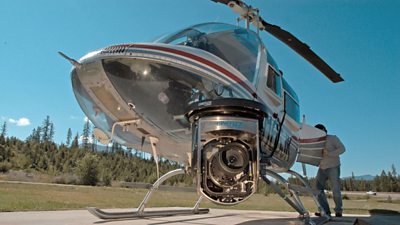
Aerial Filming and Airfields
Aerial filming may be from helicopters, fixed wing aeroplanes, hot air balloons, microlights or gliders, both in the UK and internationally. -
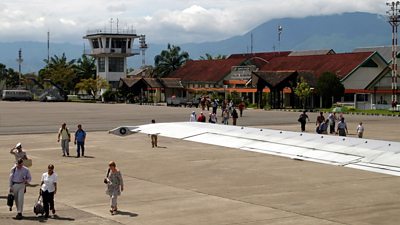
Airfields - Small
A guide to recording activities and travel from small airfields, as opposed to a commercial airport. -
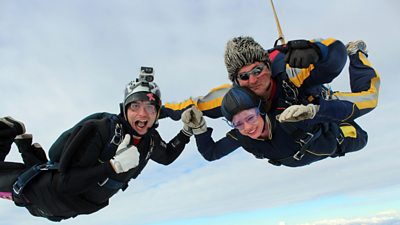
Adventure Activities & High Risk Sports
This Safety Guide provides H&S guidance to those who wish to set-up and film adventure activities / 'high risk' sports involving talent or contributors under our direction. -

Banned Airlines
EU Banned Airlines whose safety standards do not reach internationally recognised levels. -
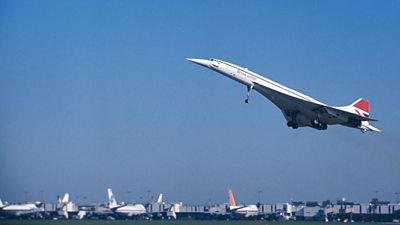
International Travel - Health and Safety
Health considerations when undertaking international travel. -
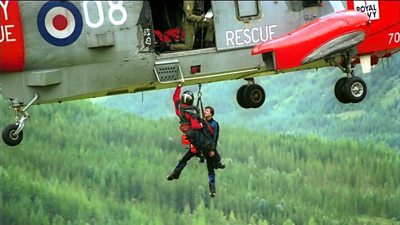 Guidance in the event of staff becoming seriously ill or injured in countries and locations remote from emergency medical services
Guidance in the event of staff becoming seriously ill or injured in countries and locations remote from emergency medical services -
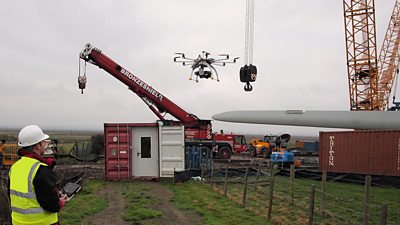
Unmanned Aerial Systems (UAS) AKA Drones
Guidance on safe use of drones
More from SSR
-
Your platform to record accidents, risk assessments, assurance monitoring and inspections
-
Safety Equipment Stores
Just one number to call: 0844 800 8875 -
成人快手 Safety Guidelines
An A-Z of 成人快手's Health and Safety Guidelines -
Safety Advice Line: 0370 411 0464 Email: safety@bbc.co.uk
Events guidance - key links:
- Exhibitions
- General Guidance
- Indoor Location Recce Checklist
- Outdoor Location Recce Checklist
- Major Incidents & Emergency Planning
- Marketing and Promotional
- Noise Exposure
- Planning and Management
- Responsibilities
- Responsibilities Form
- Laser Lighting Effects
- Strobe Lighting
- Temporary Stages and Rostra
Health topics - key links:
- (成人快手 network only)
- Contributors Fitness to Participate
- Display Screen Equipment (DSE)
- (成人快手 network only)
- First Aid and Welfare on Location
- International Travel - Risks & Health
- Manual Handling
- Mental Health: 成人快手page
- (成人快手 network only)
- Personal Health and Wellbeing
- Pregnancy
- Psychological Trauma Support & Trauma Risk Management (TRiM)
- Tiredness and Fatigue
- Travel Health Contacts
成人快手 High Risk - key links:
- CBRN and Industrial Spills
- Covert Filming
- Crisis Management and Security Support
- Demonstrations, Protests and Crowds
- Disaster Coverage
- Door Stepping
- (成人快手 network only)
- (成人快手 network only)
- Public Order
- Safety Equipment Stores
成人快手 Journalism - key links:
成人快手 Productions - key links:
- Aerial Filming and Airfields
- Animals: Displaying and handling for performance
- Boats: Working on
- Children and Young People
- Driving
- Electrical Equipment and Systems
- First Aid and Welfare on Location
- Food Safety (Cooking and Catering)
- Remote Location Working
- Roads and Streets: Working by
- Security of Productions on Location
- Stunts
- Tiredness and Fatigue
- Unmanned Aerial Systems (UAS aka Drones)
- Vehicles: Recording in, from and around
- Working at Height: Mobile Elevating Work Platforms
- Working at Height: Tower Scaffolds
成人快手 Radio - key links:
- (成人快手 Network only)
成人快手 Security - key links:
成人快手 Sport - key links:
About this site
This site describes what the 成人快手 does in relation to managing its health, safety and security risks and is intended for those who work directly for the 成人快手.
It is not intended to provide instruction or guidance on how third parties should manage their risks. The 成人快手 cannot be held liable for how this information is interpreted or used by third parties, nor provide any assurance that adopting it would provide any measure of legal compliance. More information
Some links on this site are only accessible when connected to the 成人快手 network
